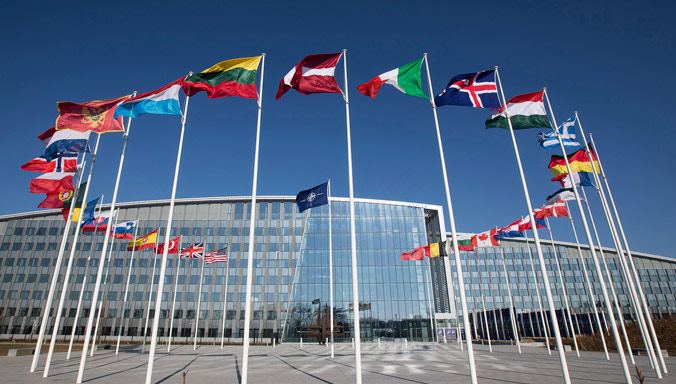
A functional military alliance needs a clearly defined enemy, especially one with a diametrically opposed ideological system from the one the alliance acknowledges. The more definable and unified its ideological world view, the stronger the alliance will be.
During the Cold War, the North Atlantic Treaty Organization was an excellent example. It struggled against the ideological world of communism, and the communists correctly perceived it as an ideological enemy, not just a military one. With the end of the Cold War and the demise of communism, NATO is unable to define who’s a rival, who’s an enemy, how to distinguish between them, and what thinking a person must accept in order to change from one into the other.
Russia today is just as capitalistic as NATO members themselves, and for many people, the difference between liberal and illiberal democracy is understandable primarily in overly intellectualized definitions made by frequently biased judges. Thus the Russian Federation itself, heir to the main enemy, the USSR, passes from one category to another as the passage of time and the media demands, on the basis of a majority’s evaluation of Russian behavior. Being conscious of the complexity of the problem of how to define clearly who’s who and how they became that way, the American administration has come up with the idea of a new alliance, an “Arab NATO.”
This new alliance would be called MESA for the Mid-East Strategic Alliance, and would unite eight Arab states, six from the Gulf region, along with Egypt and Jordan, and would “serve as a bulwark against Iranian aggression, terrorism and extremism,” as defined by a spokesperson for the U.S. National Security Council. In reality, it would be a military association of Sunnis against Iranian Shiites, with the addition that an attack on one member would be considered an attack on all, as under NATO Article 5.
As much as it may be a bold and praiseworthy idea on the surface, and could function informally in some areas such as cooperation among secret service agencies against the Muslim Brotherhood, the idea of a MESA military alliance against Iran, with the participation of the U.S., is as practical as teaching eggs to fly. The idea is also bold, potentially useful, but at the same time impractically idiotic.
It’s abundantly apparent what sort of internal problems this alliance would run up against, all of which would have to be resolved before it could ever engage an enemy. The driving force behind the alliance, Saudi Arabia, is Iran’s main rival, and is itself perceived as the source of Sunni “aggression, terrorism and extremism.” And the first problem is that, off-camera, it regards some of these “future coalition partners of the Saudis” precisely as if they were more like Iranians than Saudi allies. Furthermore, Iran’s primary adversary, Israel, which shoulders most of the burden of maintaining its power, obviously can in no way be a member of any kind of Arab military alliance.
The First Attempt Bombed
If we want to teach eggs to fly, it would be practical to look at history to see whether it’s already been tried and with what result; it will save time. In 2014, at the height of the so-called Islamic State’s rise to power, Arab states tried to create something similar to MESA, but the result was lousy. The first three alliance members immediately started quarreling in an endearing family drama when the Qataris further expanded ties with the Muslim Brotherhood, which persisted in its intention to overthrow the regime in Egypt, which was supported by the Saudis.
The Omanis’ contribution to alliance solidarity was coziness with Iran, the main enemy, with whom the allied Saudis were fighting a proxy war at the time. On the question of Syria, obviously no one agreed with anyone else, and the whole alliance folded before it could even form a commission for deliberating its creation. It was totally based on a previous anti-Iran bloc, the Peninsula Shield Force from the 1980s, which collapsed when one member, Iraq, occupied another, Kuwait, and both forgot about the Shiites.
If we add into the equation the constantly changing relations among Sunni dynasties in the Gulf, largely related by blood, where momentary state policies are often decided by the relations of a hereditary ruler, or consider the numerous Shiite communities inside the future Sunni alliance, and stir into this goulash, the pungent questions of whether Sunni Iraq is really Shiite Iraq, and to what extent the Syrian Alawite elite will be Shia in the end, then the result is quite clear.
Until Arab Sunni leaders convene with Donald Trump in Washington in mid-October to negotiate a further coordinated approach to Iran, only one thing will remain clear—they won’t lack financial resources but they’ll lack everything else.

Leave a Reply
You must be logged in to post a comment.